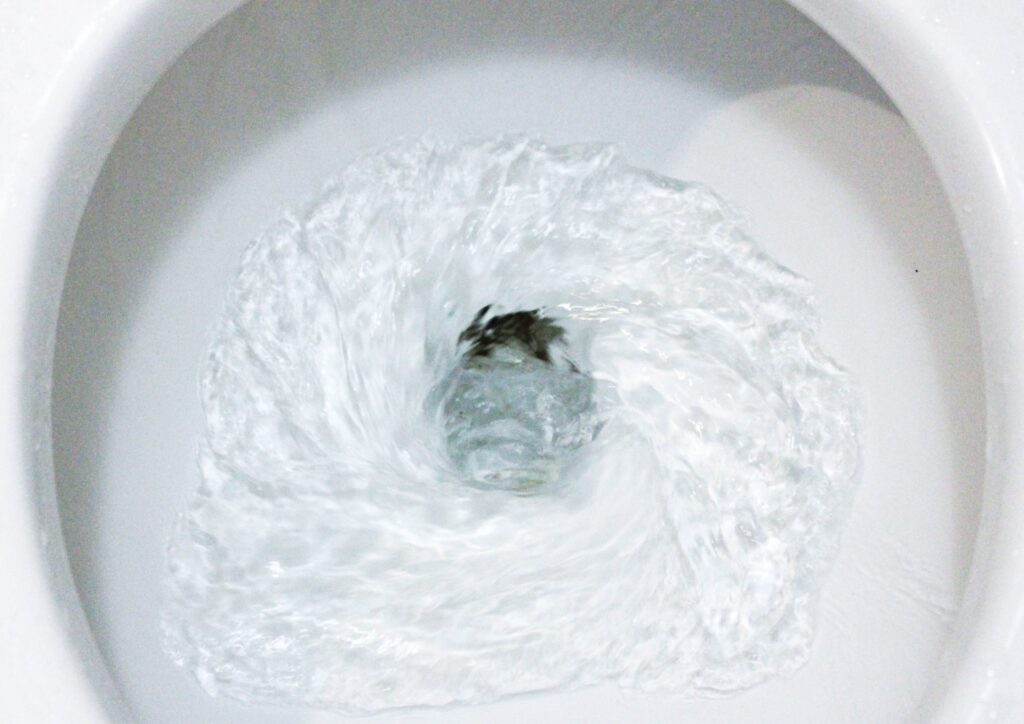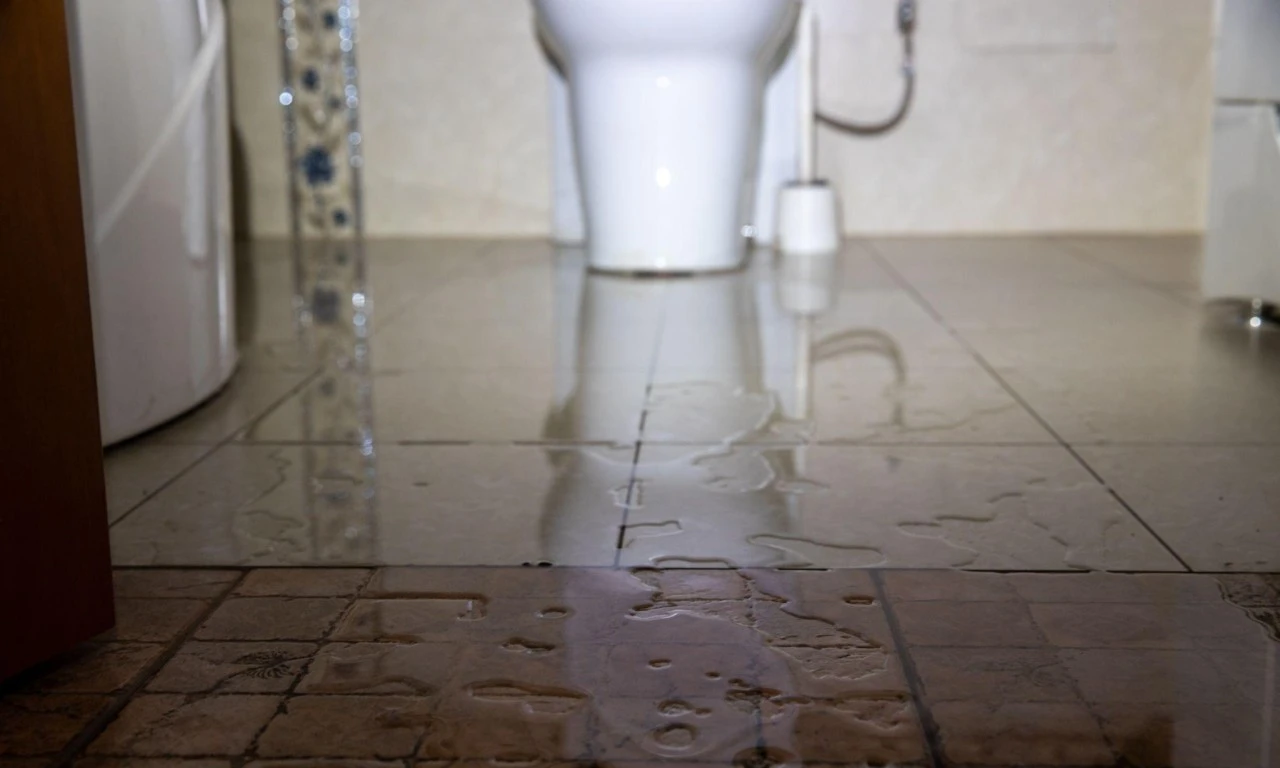
According to the United States Environmental Protection Agency, toilets are far and away the number one water user in the average home, making up nearly 30 percent of a residence’s indoor water consumption—an issue that can contribute to water damage if leaks or overflows occur. Data further indicates that outdated toilets versus newer, more efficient models can use up to six gallons of water per flush!
This can be compounded when taking into account malfunctioning or clogged toilets that can lead to overflow issues. In such cases, an ounce of prevention can save time, money, and an epic hassle when it comes to preventing toilet overflow, water waste, and home flooding. This is where patented technology by aquaHALT by waterAUTOMATION, a battery-operated leak detection system that stops water flow at the source, can make all the difference.
Multiple sites, including This Old House, report that water damage is reliably at the top of the list when it comes to common reasons people put in home insurance claims. Many people would know to expect damage from things like storms, but the responsible homeowner should also consider problems stemming from issues inside the home, including those that start with overflowing toilets. While insurance may cover the cost of some repairs, there is no way to pay back the hassle and time involved in the unpleasant cleanup and renovation process that follows an overflow.
For these reasons, and more, aquaHALT devised its innovative system to actually stop leaks, versus merely reporting that they are occurring, as other systems might do.
Did you know that homes are ten times more likely to be damaged by water leakage than fire? Ten times! On top of this, the average cost of flood damage caused by a water leak can be upwards of $11,000—a huge financial burden for most people. The affordable, easy-to-use and install aquaHALT system provides peace of mind that any such leaks stemming from malfunctioning or overflowing toilets can be stopped before those thousands upon thousands of dollars of damage can be incurred.

It’s not just individual homeowners who can benefit from this trademarked technology either. Landlords and property managers will find that this stop-at-the-source leak detection system will be a vital asset to rental spaces, allowing multiple units to be monitored at once so that a problem leak in one unit won’t overflow onto floors below or neighboring units in a given building.
Uniquely, aquaHALT requires no electrician or plumber to install the device. Rather, a user needs nothing more than two AA Batteries. Users may also want to contact their insurance carrier to let them know the user has invested in this preemptive device, as the aquaHALT system could lead to a great deal of savings for both the insurance company and the policyholder.
Just as a smoke detector alerts a resident of dangerous smoke filling a home, aquaHALT detects unusually high levels of water and moisture around the toilet. However, whereas a smoke alarm cannot put out a fire, aquaHALT can stop flowing water at its source instantly. This is of particular value to people who are away from their dwelling when problems arise. Whereas someone who is at home might be able to intervene instantly, someone who is miles away at an important meeting, work, or appointment can rest assured that a small leak won’t turn into a major flood.
What’s more, those afraid of marring any carefully curated bathroom décor don’t need to worry, as few people even notice the discreet water monitoring unit tucked away behind the toilet tank.
For these reasons and countless others, a small investment in an aquaHALT can lead to big savings down the line.
Peter Drucker said it best: “What gets measured gets managed.”
That rings especially true when you’re managing buildings or infrastructure. You can’t manage what you can’t see. And water—sneaky, silent water—can cause structural chaos before you even know it’s there.
I’ve seen more than one “small leak” lead to serious downtime in commercial operations. That’s why I lean heavily on water leak detection tools, especially in preventive maintenance.
My go-to method? A layered approach. I always start by identifying high-risk areas—under HVAC units, near water heaters, and around older piping. That’s where I place smart leak sensors. These devices immediately notify me via SMS or email if they detect even a few drops.
Next comes flow monitoring. Tools like Flume or Moen Flo allow me to track water usage in real time. If there’s a sudden spike, I know something’s wrong—before anyone else notices. I’ve used this to detect burst pipes at 3 AM. That early warning saved an entire server room.
For hidden infrastructure, like concrete slabs or ceilings, thermal imaging cameras are invaluable. I’ve used them to trace pipe leaks inside hotel ceilings without breaking a single tile. The tech pays for itself tenfold.
Water leak detection tools are not just about catching drips—they’re about protecting assets, maintaining uptime, and reducing liabilities. They let me see the invisible, act early, and manage water like the risk it really is.
“Water damage claims cost insurers over $13 billion a year in the U.S. alone.” – Insurance Information Institute
That stat stuck with me. Not because I work in insurance, but because it highlights a silent killer in buildings: hidden leaks. I’ve seen what unchecked moisture can do—peeling walls, mold crawling through corners, and rotting beams. All avoidable. That’s why I never take water leak detection lightly.
I’ve worked with a range of water leak detection tools, from simple sensors to advanced smart systems. When choosing the right one, the setting matters.
In residential homes, I like to start small—battery-operated leak detectors under sinks or near boilers. These are my frontline defense. They beep or send alerts when they sense moisture, giving homeowners a chance to act before the damage spreads.
For commercial properties, it gets more sophisticated. I often use Wi-Fi enabled systems that link to a central app. These don’t just alert me—they show me exactly where the problem is. I can remotely shut off the water or notify maintenance immediately. That’s saved clients thousands.
I also use acoustic listening devices and infrared thermography for complex cases. These tools help pinpoint leaks inside walls or underground without tearing things apart. It’s non-invasive and highly accurate.
What’s key is this: these tools aren’t just gadgets—they’re decision-makers. They give me time. Time to fix small problems before they turn into six-figure repairs.
Using water leak detection tools isn’t just smart—it’s essential. Whether I’m protecting a rental property or a corporate office, these devices are part of my daily toolkit. They don’t just find leaks. They stop disasters before they start.
“Every dollar spent on prevention saves $4 in future repair.” — National Institute of Building Sciences
Water is essential—but it can also be destructive. I’ve managed properties long enough to know that once water starts leaking, time isn’t on your side. Every minute matters. That’s why preventing water damage with technology is no longer optional in my world—it’s essential.
The biggest misconception is that you’ll always see a leak. You won’t. Often, it starts behind the walls, under the floor, or at a pipe joint you haven’t looked at in years. And by the time you do see it? Damage is done.
That’s why I rely on smart sensors, leak detectors, and automated shutoff valves. These tools monitor areas you rarely think about. And when moisture appears, they notify me instantly—often before any visible signs show up.
I use leak detection sensors under sinks, next to hot water cylinders, and in mechanical rooms. But preventing water damage with technology goes beyond hardware. It’s also about systems that integrate into your existing smart platforms. A property-wide system can monitor multiple zones, send alerts by email or app, and even log historical data for analysis.
That kind of oversight isn’t just convenient—it’s powerful.
And here’s the ROI: one $50 leak sensor can save you from a $5,000 flooring replacement. One shutoff valve can stop a flood from wrecking an entire apartment. That’s why I tell every client: invest now, or pay later.
Beyond the financial cost, leaks can lead to compliance issues, tenant complaints, and reputation damage. Especially in commercial or rental properties, small issues escalate fast if you’re not prepared.
Key Takeaways:
Preventing water damage with technology isn’t just smart. It’s necessary.
“Water damage claims are the second most frequent insurance claim in the world.” — Zurich Insurance
Let that sink in for a second. Water damage doesn’t just make up a slice of the pie—it’s one of the biggest Let’s talk numbers: water damage accounts for billions in property losses every year. It’s one of the most common—and costly—types of insurance claims globally. And most of it? Completely preventable.
That’s the power of early water leak detection.
I’ve been on properties where a small, undetected leak had been seeping for months. The damage was slow, subtle, and expensive—warped flooring, rotting drywall, mold in the ceiling cavities. The worst part? The owner had no idea until the ceiling collapsed.
With early water leak detection, you can stop that nightmare before it starts.
Here’s how it works: smart sensors are placed in high-risk zones—under sinks, near boilers, around dishwashers, and in utility rooms. If the device detects moisture or a sudden change in temperature, it sends an alert to your phone or building management system. Some systems go even further with automatic shutoff valves that close the water supply instantly, limiting any potential damage.
For landlords, facility managers, or developers, early water leak detection should be standard. The cost of installing these devices is minimal compared to the thousands (or tens of thousands) in repairs they help avoid.
But it’s not just about saving money. It’s about protecting health. Undetected leaks can lead to mold growth, which puts occupants at risk and can complicate compliance issues. I’ve worked with clients who had to relocate tenants for weeks because of mold remediation.
The good news? The technology is better and more accessible than ever.
Key Takeaways:
Early water leak detection isn’t a luxury. It’s a frontline defense—and it’s one of the smartest investments you can make for any property.